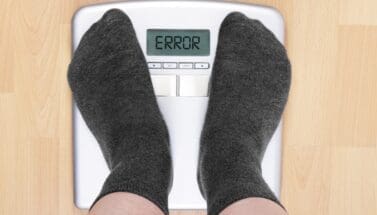- Leverage new ways to optimize your workout for maximum muscle growth.
- Learn the role nutrition plays in muscle growth.
- Discover effective ways to burn off excess weight.
How to Optimize Your Workout for Maximum Muscle Growth and Fat Loss
Optimizing workouts for weight loss and muscle growth is hard. There’s a lot of misinformation out there: from those Get Big Biceps in 30 Days infomercial workouts to diets claiming they’ll get you a six-pack in one week.
The truth is–muscle growth and fat loss takes time, discipline, and science. The first step to creating the perfect workout plan starts with smart and efficient training. Add to that a little help from your friends at Rock’s Discount Vitamins, and you’ve got the perfect recipe for maximizing gains and trimming down your gut. Stop with the fake trends and fads and stick to stuff that works and you’ll reach your body goals in no time.
Building Big Muscles
From bulging biceps to enviable lats, many of us want big muscles. But how do we achieve that? The truth of the matter is, there’s no quick easy way to build muscle. You have to eat right and train hard. While we don’t have a quick overnight formula to get you big biceps, we do have workout tips to help with your muscle growth.
Workout Tips for Muscle Growth
Curls, squats, and deadlifts— any exercise that pushes your physical capabilities is bound to lead to muscle growth, but the key to real muscle building lies in the following:
- Consistency: The American Heart Association (AHA) recommends hitting the major muscle groups (shoulders, chest, arms, and legs) twice a week. Ensuring you are consistently hitting each group is key to building muscle.
- Number of Reps and Sets: The number of reps and sets you do is important when it comes to muscle growth. To achieve bigger muscles, it is important to do 3-4 sets per muscle group and around 8-12 reps per set.
- Weight: Workouts have to be challenging. Without pushing yourself, you won’t see the desired results. Think of it this way: no one ever got big biceps by curling a pen.
- Progressive Overload: Progressive overload is a preferred training method for weight lifting that requires one to slowly increase the difficulty of their exercises. You can do so by increasing the intensity, weight, or duration of your workout regimen. For example, if one week you bench press 135lbs for 5 reps, by the following week you would want to either increase the weight or the number of reps. It’s important to remember that any small increase is a good thing, even if it doesn’t feel like a lot!
Eat Right and Get Right
Working out is only the half of it when it comes to building muscle and losing weight. The other half, well that depends on what goes down in the kitchen, more specifically, what you eat. Whether you wanna lose weight, build muscle, or both, you have to eat right to get right. From high-protein foods to healthy fats, the food combinations are endless. So whatever you choose to eat—just make sure it’s healthy. Some great tips to make dieting easy include:
Protein is King
Protein is essential in any diet, but especially for building muscle and losing fat. Protein helps rebuild muscles, and keeps you full for longer, helping reduce your caloric intake. A good rule of thumb when it comes to your protein intake is to consume between 0.5 to 0.08 grams of protein per pound of body weight. This will help build muscle mass while staving off those excess pounds.
Good Protein Sources:
- Pork loin
- Salmon
- Tuna
- Chicken breast
- Eggs
- Cottage cheese
- Turkey
- Tofu
Fat Loss Workout Tips: Cardio is King
Staying active through cardio is a great way to complement a weight-lifting program and a healthy diet. Cardio is especially beneficial for those looking to optimize their workouts for weight loss. The Dietary Guidelines for Americans suggest that to lose excess weight, Americans should burn 500-700 calories per day to lose about 1-1 ½ pounds per week. A sure way to burn those extra calories is by engaging in some form of aerobic activity for a minimum of 300 minutes per week. Great options include:
- Swimming: Moderate swimming can burn up to 528 calories an hour.
- Cycling: An average cycling session can burn up to 450 calories per hour.
- Walking: While many factors affect the amount of calories an individual burns when waking, 3 mph for 30 minutes can burn around 100-150 calories.
- Jogging: The exact number of calories burned when jogging is affected by several factors, but it’s estimated that an average person burns about 100 calories per mile.
- Dancing: It’s estimated a dance class can burn as little as 130 calories and as many as 250 per 30-minute session.
Take Your Fitness to the Next Level!
From metabolism boosters, full meal replacements and protein powders, at Rock’s Discount Vitamins, we have everything you need to achieve maximum muscle growth and fat loss. With an unwavering commitment to quality supplements, we’ll help you take your fitness game to the next level. Visit us today!





